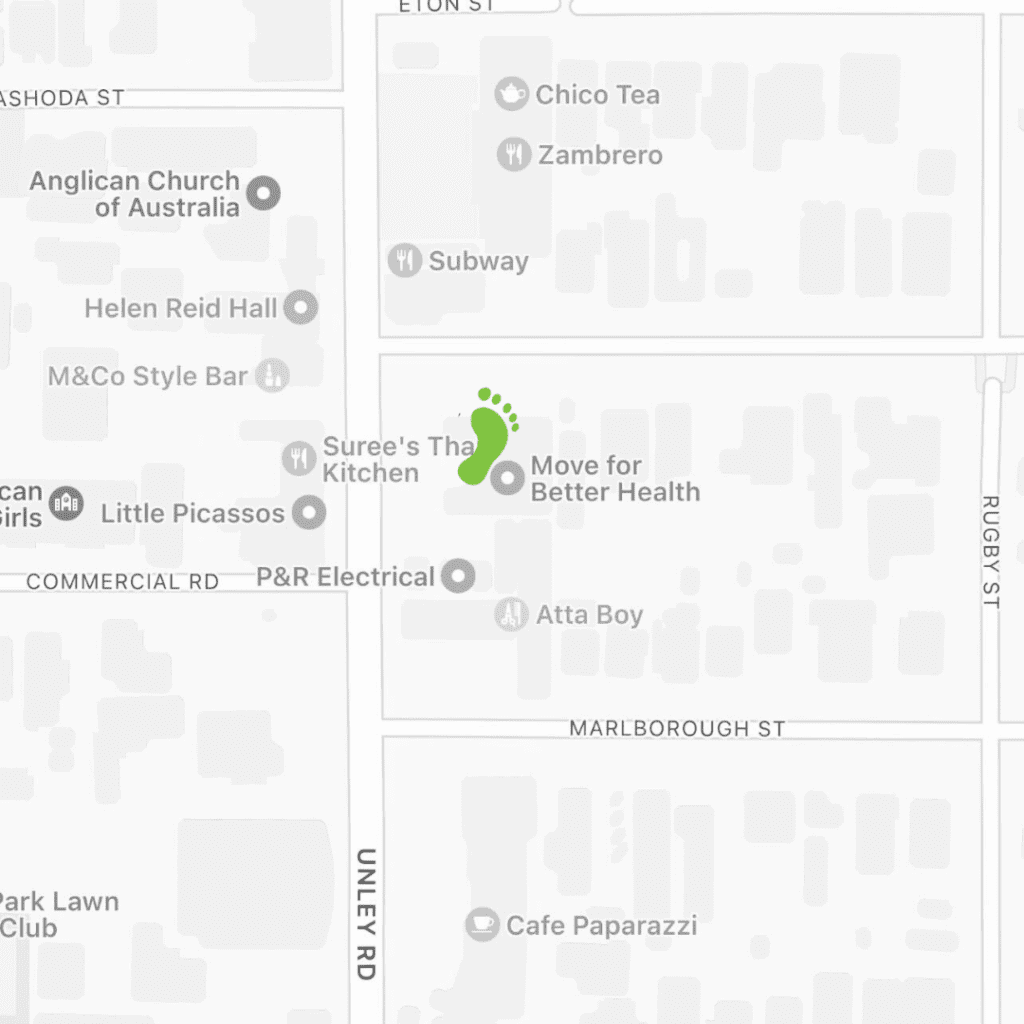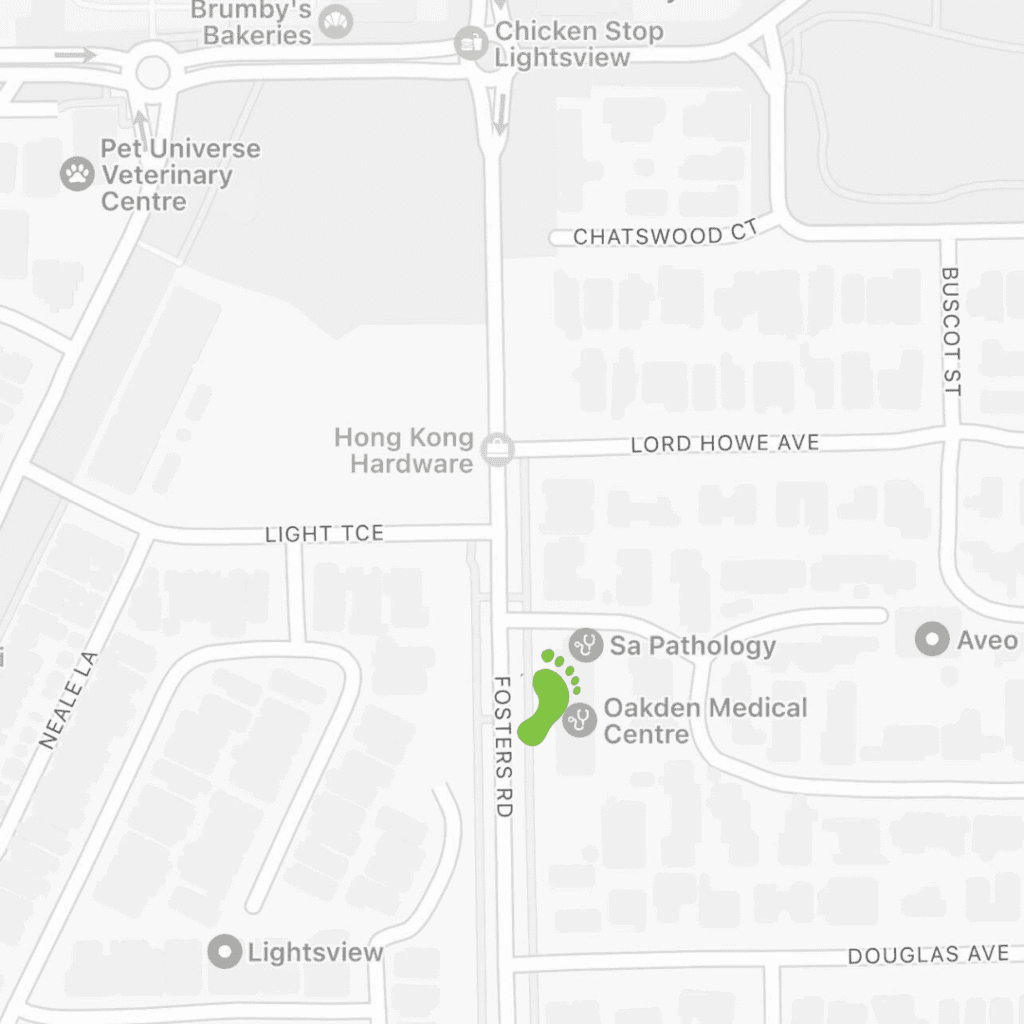Corns and Callus
The pressure of calluses
Our feet play an important role in getting us around. When we walk or stand, our feet carry the burden of our body weight, as well as bearing the various pressures of movement and the constraints of footwear.
Sometimes, pressure placed on the foot becomes out of balance and extra friction falls on particular areas of the foot. When this happens, the body may respond to the pressure by producing thickenings in the surface layer of the skin. These hard patches of skin are called calluses and are part of the body’s defence system to protect the underlying tissues. If the cause of pressure is not relieved, calluses become painful.
… and corns
If the pressure becomes concentrated in a small area, a ‘hard’ corn may develop. Sometimes the pressure of the corn or callus may produce inflammation which can result in acute pain, swelling and redness.
Sometimes ‘soft’ corns may form between the toes where the skin is moist from sweat or inadequate drying. These appear white and rubbery and are also caused by excessive friction.
Corns and calluses are most often found on the balls of the feet or the tops of toes. They can also be found on heels and even along the sides of toenails.
What causes calluses and corns?
Calluses and corns are generally symptoms of underlying problems and in some cases, early warning signs of more complex foot disorders. Because they are caused by continuous pressure in one particular area, they may indicate abnormalities or deformity in bone structure or in the way a person walks. Often calluses and corns are caused by ill-fitting or inappropriate footwear.
Who gets calluses and corns?
Almost everyone!
In fact, calluses and corns affect more people than any other kind of foot problem.
Some people have a natural tendency to develop calluses because of their skin type. For instance, elderly people have less fatty tissue and elasticity in their feet and because of a lack of padding, calluses may form on the bottom of the foot.
Also, people who work in occupations that require them to spend a lot of time on their feet are prone to developing calluses.
How to treat calluses and corns
The most important thing to remember about treating calluses and corns is never do it yourself without seeing a professional first. Because calluses are generally symptoms of other problems, it is important to have a podiatrist examine your feet to work out what could be causing the pressure.
Over-the-counter remedies such as corn paint or plasters generally only treat the symptoms – not the causes. Also, they can easily damage the healthy skin surrounding the corn if not used properly. Commercial preparations should only be used following professional advice.
Warning!
It is important that you never cut corns or calluses yourself. In the warm, moist confines of enclosed shoes, the infection can easily develop and small cuts can quickly become serious wounds.
Seeing your podiatrist
Your podiatrist will not only recommend ways to relieve pain and get rid of the corn or callus but can also help with isolating the cause and preventing the problem recurring. To treat painful corns, your podiatrist will gently remove some of the hard skin of the callus so that the centre of the corn can be removed.
To allow the callus to heal and prevent future cases, your podiatrist may redistribute pressure on the foot with soft padding and strapping or deflective appliances that fit easily into your shoes. For corns on the toes, small foam wedges are useful for relieving pressure on affected parts. For older patients suffering from calluses on the soles of the feet, extra shock absorption for the ball of the foot can help to compensate for the loss of natural padding.
Your podiatrist may also discuss the type of footwear most likely to cause corns and calluses. In some cases, special shoe inserts (orthoses) may be prescribed to reduce excessive weight-bearing forces on the foot and provide long-term relief.
Preventing Corns and Calluses and caring for your feet
The best way to prevent the development of calluses and corns is to pay attention to your feet when you feel there is extra pressure on specific areas.
- Properly fitting shoes are essential, especially if you spend long periods of time on your feet and it is important that you never wear others’ shoes.
- A moisturiser used daily will help to keep your skin supple. But don’t forget that these problems are caused by pressure.
- If you feel you may be developing a callus or corn, or you already have one, the best thing to do is seek professional advice and treatment from your local podiatrist.


 Address: 500 Magill Road, MAGILL SA 5072
Our Magill clinic is located inside the Move for Better Health Building working alongside iNform Health and Fitness, Move Physiotherapy, 360-Me Nutrition and NLC Psychology. This clinic can be found on the corner of Briant Road and Magill Road.
Accessibility: Ramp facilities, located on ground floor, disabled parking.
Parking: Onsite free car parking, ample street parking.
Restroom Facilities: Yes
Address: 500 Magill Road, MAGILL SA 5072
Our Magill clinic is located inside the Move for Better Health Building working alongside iNform Health and Fitness, Move Physiotherapy, 360-Me Nutrition and NLC Psychology. This clinic can be found on the corner of Briant Road and Magill Road.
Accessibility: Ramp facilities, located on ground floor, disabled parking.
Parking: Onsite free car parking, ample street parking.
Restroom Facilities: Yes
 Address: 277 Unley Road, MALVERN SA 5061
Our Malvern clinic is located inside the Move for Better Health Building working alongside iNform Health and Fitness, Move Physiotherapy, 360-Me Nutrition and NLC Psychology. This clinic can be found on the corner of Fisher Street and Unley Road.
Accessibility: Ramp facilities, located on ground floor, disabled parking.
Parking: Onsite free car parking, ample street parking.
Restroom Facilities: Yes
Opening Hours:
Address: 277 Unley Road, MALVERN SA 5061
Our Malvern clinic is located inside the Move for Better Health Building working alongside iNform Health and Fitness, Move Physiotherapy, 360-Me Nutrition and NLC Psychology. This clinic can be found on the corner of Fisher Street and Unley Road.
Accessibility: Ramp facilities, located on ground floor, disabled parking.
Parking: Onsite free car parking, ample street parking.
Restroom Facilities: Yes
Opening Hours:
 Address: Suite 5, 81-83 Smart Road, MODBURY SA 5092
This location is a Bupa Members First provider
Our Modbury clinic is located on Smart Road, opposite the back entrance to the Tea Tree Plaza car park. The entrance to our car park is at the smaller roundabout, heading east up Smart Road.
Accessibility: Ramp facilities, located on ground floor, disabled parking.
Parking: Onsite free car parking, ample street parking.
Restroom Facilities: Yes
Opening Hours:
Address: Suite 5, 81-83 Smart Road, MODBURY SA 5092
This location is a Bupa Members First provider
Our Modbury clinic is located on Smart Road, opposite the back entrance to the Tea Tree Plaza car park. The entrance to our car park is at the smaller roundabout, heading east up Smart Road.
Accessibility: Ramp facilities, located on ground floor, disabled parking.
Parking: Onsite free car parking, ample street parking.
Restroom Facilities: Yes
Opening Hours:
 Address: Level 1, 132-134 Fosters Road HILLCREST SA 5086
This location is a Bupa Members First provider.
Our Oakden clinic is located on Level One of the Oakden Medical Centre. The building is a two storey white building on the eastern side of Fosters Road, before reaching the Northgate Shopping Centre.
Accessibility: Lift and ramp facilities, disabled parking.
Parking: Onsite free car parking, ample street parking.
Restroom Facilities: Yes
Opening Hours:
Address: Level 1, 132-134 Fosters Road HILLCREST SA 5086
This location is a Bupa Members First provider.
Our Oakden clinic is located on Level One of the Oakden Medical Centre. The building is a two storey white building on the eastern side of Fosters Road, before reaching the Northgate Shopping Centre.
Accessibility: Lift and ramp facilities, disabled parking.
Parking: Onsite free car parking, ample street parking.
Restroom Facilities: Yes
Opening Hours:
